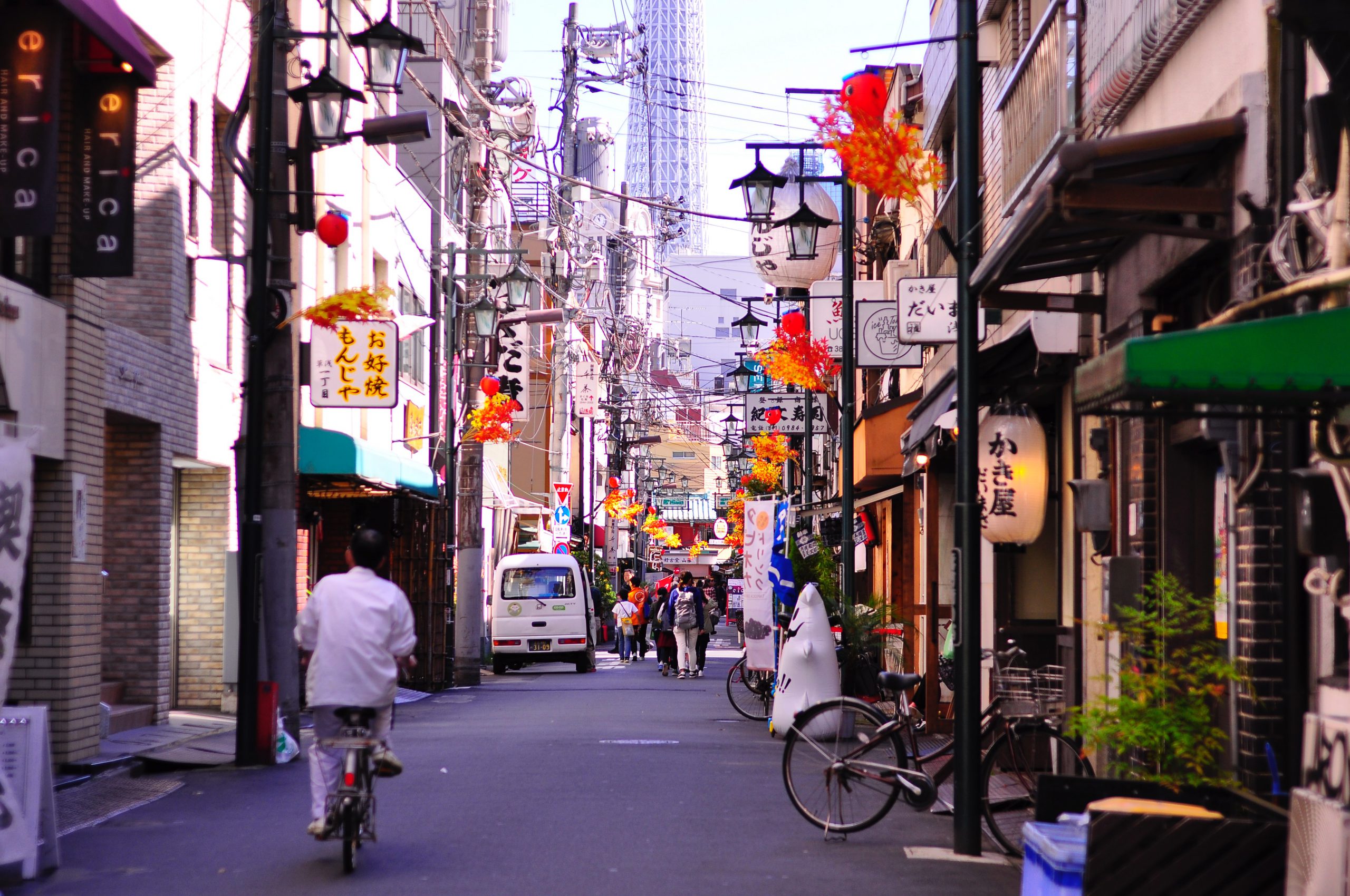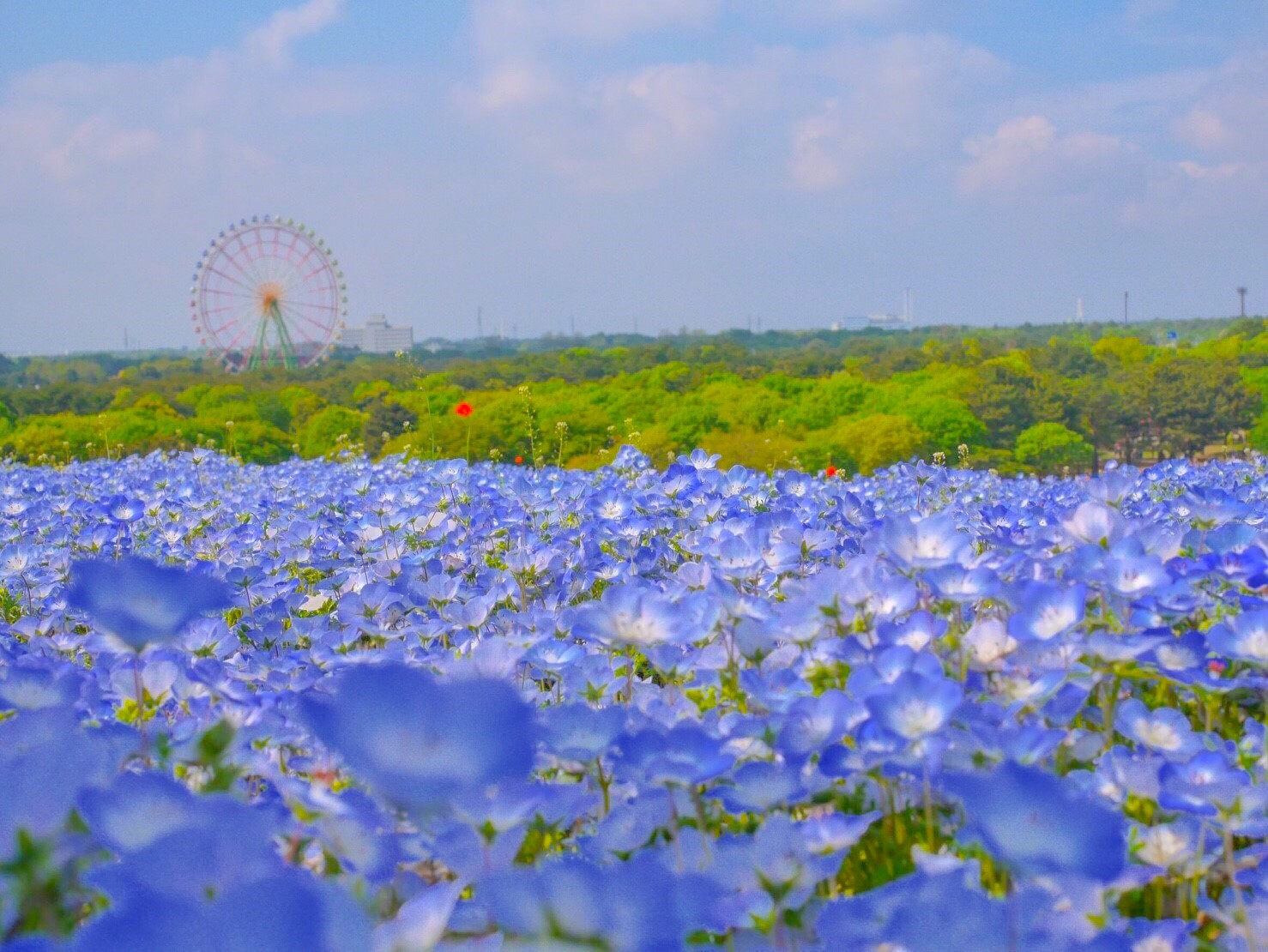Have you heard of Shitamachi? Shitamachi is often used to describe an old town with a traditional atmosphere. Shitamachi literally means ‘lower city’ and is associated with the ‘common’ people’s culture and life, before WWII. It is hard to define the exact ‘old center of Tokyo’, as, unlike many European cities, the old center of Tokyo is scattered all over the city. There are many Shitamachi areas in Tokyo, including some popular ones such as Asakusa and Shibamata. In these areas, you can see many (famous) temples and shrines, as well as beautiful townscapes created by traditional houses and structures dating back to the Edo period through the Showa period. Here is our list of Shitamachi areas in Tokyo and popular tourist attractions around!
1. Asakusa (Nakamise Street)
Asakusa attracts numerous visitors from around the world as one of the most popular tourist destinations in Tokyo. This historical area boasts a number of incredible spots such as Senso-ji, the oldest Buddhist temple in Tokyo with over 1,300 years of history. Nakamise Street (also known as “Nakamise-dori”) refers to the lively shopping street, leading up to the famous temple.

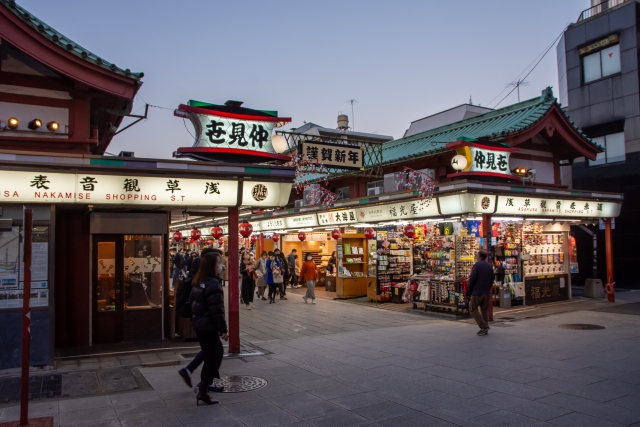
2. Kappabashi (Kitchen street)
If you want to buy some high-quality Japanese kitchenware to bring home, head to the Kappabashi street! Nestled between Asakusa and Ueno, it is renowned as a shopping mecca offering incredible collections of kitchen items such as utensils and convenient appliances. Professional chefs and restaurant owners from all over Tokyo flock to the 170 shops standing along the main street stretching approximately 800m. It is also visited by a high number of (international) tourists looking for high-quality Japanese knives or ceramics. You can find all kinds of pottery like bowls, cups, sake sets and many more, in different designs for good prices. Another highlight is the unique shops specialized in sampuru; the plastic food samples that look shockingly real. Many restaurants in Japan display their menu using plastic replica’s. The reason for this is because in Japan food is also judged by its looks so the menu should look as tasty as possible!

3. Edo Tokyo Museum
*It’s temporarily closed for renovation from 2022-2025
You can visit Edo Tokyo Museum to get to know the long history of Tokyo and Edo more deeply. Since its opening in 1993, it has attracted an increasing number of visitors with a large collection of informative and valuable exhibitions. You might expect much from the simple exterior of the building, but once you enter it, you will find yourself surrounded by incredible exhibitions occupying 7 floors in total!
There is a permanent exhibition that teaches visitors on the history as well as culture in the Edo period through historical objects and replicas. On the 5th and 6th floor, you can walk around the reproduced townscape of both back in the Edo period and modern Tokyo. Another highlight you won’t miss is a full-scale model of Nihonbashi, a symbolic bridge that once connected Edo to other regions across Japan!
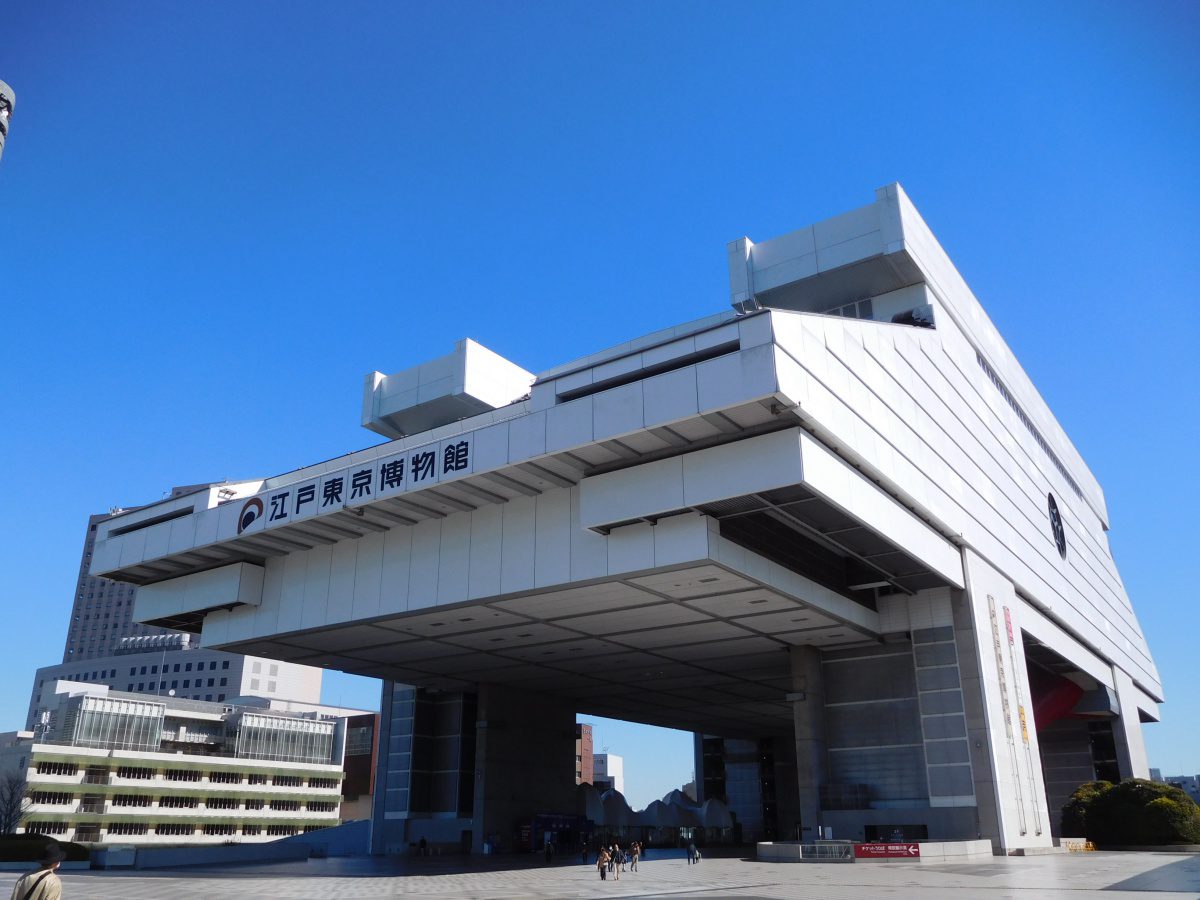

9:30am – 5:30pm (※closed on Monday)
Admission fee ¥600 (adult)
4. Fukagawa
Fukagawa refers to a nostalgic area nestled in the eastern part of Koto Ward (江東区), near Nihonbashi. It is home to a number of historical and cultural spots. This old town originally developed as a lively merchant neighborhood during the Edo period and served as an inspiration for many famous ukiyo-e prints in the Edo period.
The bayside area was historically a merchant neighbourhood, located near important waterways like the Sumidagawa river connecting Edo with other regions. In the area new temples and shrines were established, which was followed by a number of new residents moving to the area. You can still feel the air of the Edo period while exploring the retro townscape.
Head to Tomioka Hachimangu Shrine (富岡八幡宮), often mentioned as the birthplace of sumo and home to one of the largest Shinto festivals in Tokyo, held in the mid-August. Naritasan Fukagawa Ifuudoudou (成田山深川不動堂) is a branch temple of Naritasan Shinshoji, an iconic tourist attraction accessible from Narita International Airport in Chiba Prefecture. Don’t forget to try the local specialty Fukagawa-meshi, a traditional meal consisting of a bowl of rice topped with boiled clams and Japanese long onions cooked in miso.
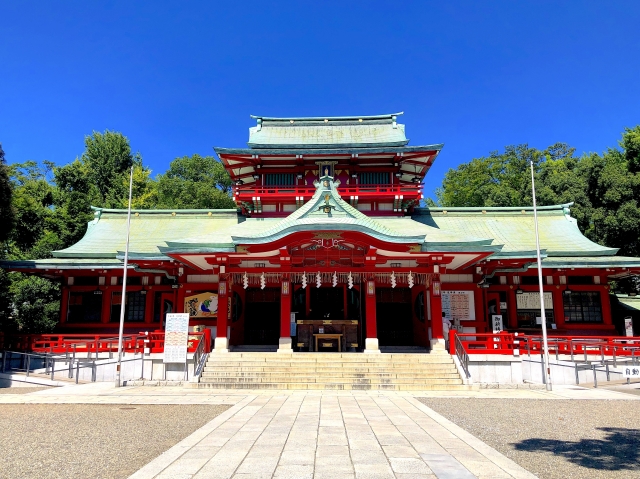

5. Shibamata
If you are looking for a weekend trip destination to experience the Shitamachi atmosphere, head to Shibamata, a nostalgic beautiful area accessible in 65 minutes by train from Shinjuku! This peaceful neighborhood is known as the set of Otoko wa Tsurai yo (translated as “it is tough being a man”), a famous Japanese film set in the Showa era (1926-1989). At the station, you will be welcomed by a bronze statue of Tora-san, the main character of the movie. Take a stroll along Taishakuten-sando, a quaint shopping street filled with traditional stalls selling Japanese sweets and memorable souvenirs. Don’t miss the stunning wooden carvings and scenic Japanese-style garden at Taishakuten, a sacred temple established in 1629.

6. Yanesen
Yanaka refers to three nostalgic neighborhoods which are located north west of Ueno Park; Yanaka, Nezu and Sendagi. The traditional townscape is created by old buildings and houses which mainly date back to the Showa period (1926-1989). Yanaka Ginza (谷中銀座) is a popular shopping street stretching approximately 170m with small 70 shops. Visitors can explore the lively street while getting local snacks or sweets. The welcoming atmosphere also allows you to escape from the busy streets and crowds in urban areas in Tokyo!
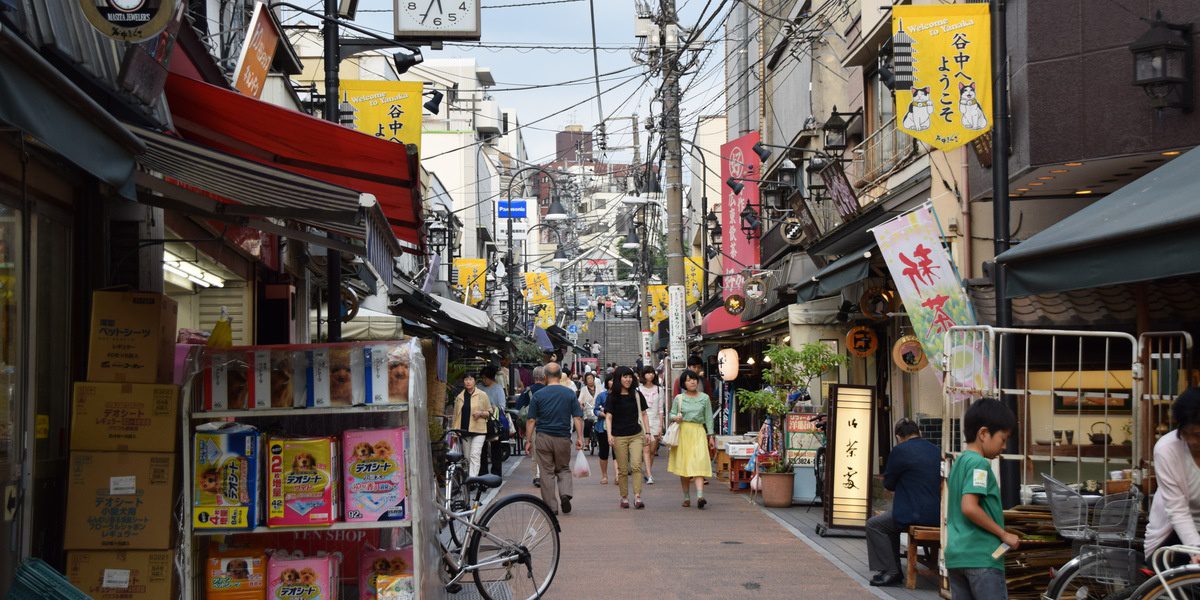
Yanesen is also home to historical spots offering memorable experiences apart from shopping. Yanaka Cemetery attracts numerous people as a popular cherry blossom viewing spot during spring season and only a 20min walk from Yanaka Ginza you can visit the Nezu Shrine, which is widely known for beautiful azalea as well as the thousands of torii gates!
7. Intriguing museums in Sumida area
The Sumida area is where Edo meets modern-day Japan, here you can find some of the most famous (tourist) attractions including Tokyo Skytree, Tokyo’s tallest structure that also serves as a shopping center. But you can also visit several interesting museums, including the Tokyo Edo Museum mentioned earlier. Check some of our other recommendations below to discover the details of their incredible collections.
Sumida Edo Kiriko Museum
Kiriko is a traditional Japanese glass art with a history dating back to the early 19th century. Edo Kiriko was developed by professional craftsmen who were impressed by the glass cutting techniques introduced from Western countries. It features exquisite patterns of carvings that makes the glass reflect light gracefully. At the Sumida Edo Kiriko Museum visitors can get Edo Kiriko products as a memorable gift and learn how the beautiful glass art is made. They also organize fun glass-cutting classes where you can make your own Kiriko glass.
10am – 5pm
Glass-cutting class ¥4,400 *online booking is required
Sumida Hokusai Museum
If you love the world famous Ukiyo-e art printings, make sure to visit the Sumida Hokusai Museum! It is dedicated to Katsushika Hokusai, a world-famous Japanese artist who dedicated his life to Ukiyo-e paintings during the Edo period. The museum showcases a large collection of his works and informative exhibitions where you learn all about his incredible painting techniques. On the 4th floor, you can find permanent exhibitions, including a scene with life-sized dolls of him and his daughter depicting his working process.
9:30am – 5:30pm (closed on Monday)
Admission fee ¥400 for permanent exhibition, temporary exhibition varies
Where to Stay in Shitamachi

YANAKA SOW is a unique hotel located in the cultural Yanesen Area. Their concept is a place between staying and living; you can get a local experience connected to people, which is also suitable for a long-term stay. The staff called YANAKA DIGGER who are specialized in the area can assist you with some advice on how to enjoy the area based on their deep knowledge of the area when you need it.
There are 13 rooms available and each room has a different concept.
Self-check-in and check-out on the tablet at the entrance make it easy for your trip.
If you are looking for a place where you can be immense yourself in the local historical area in Tokyo, this is a great option for you!
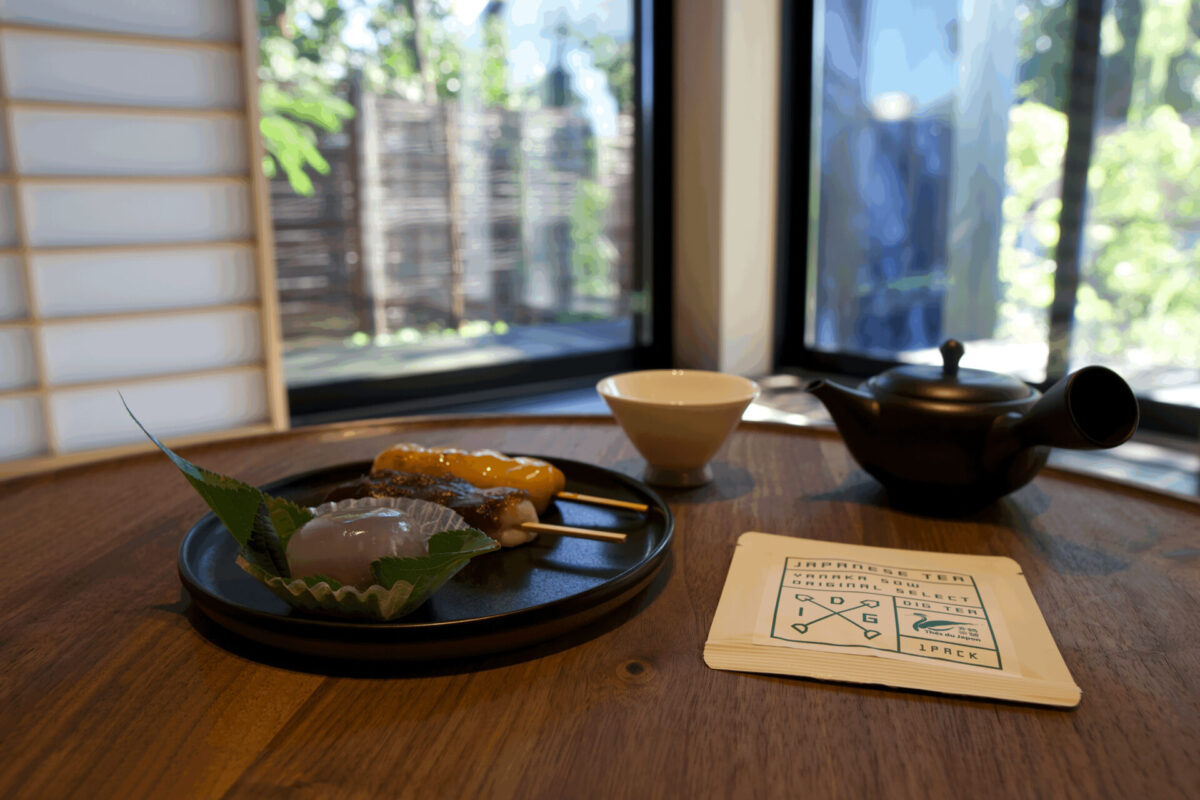

Japan Wonder Travel Tours
Are you interested in discovering all about the traditional city centers of Tokyo or would you like to learn more about the old Tokyo vs. the new Tokyo? We are happy to guide you around and show you places to get a taste of the typical Shitamachi atmosphere as well as the modern metropolitan vibes. We offer a wide range of tours that can be customized according to your request. If you need some help to organize your trip to Japan, you should definitely check out our private tours with a local guide. We’d be delighted to make your trip to Japan a safe, comfortable, and unforgettable memory!
- Fukagawa Walking Tour
Explore the hidden gems with a local guide! This tour is centered on visiting a shrine and temples, if you are interested in historical sites and Japanese religions and culture, this tour is highly recommended. - Tokyo Fish Market Tour
Visit Tsukiji, a lively fish market packed with great restaurants offering high-quality seafood and refreshing drinks! - Tokyo 1 day Highlights Tour
Join our private tour and explore the highlights in Tokyo with our friendly local guide.
Visiting Shitamachi allows you to immerse yourself in a relaxing atmosphere through memorable experiences that you won’t be able to find in urban areas. It is also enjoyable to compare both areas that have completely different features. You can also expect a heart-warming interaction with local communities that have played a significant role in preserving the nostalgic towns for centuries!
Follow us on Instagram or Facebook for more travel inspiration. Or tag us to get featured!
Happy traveling!
